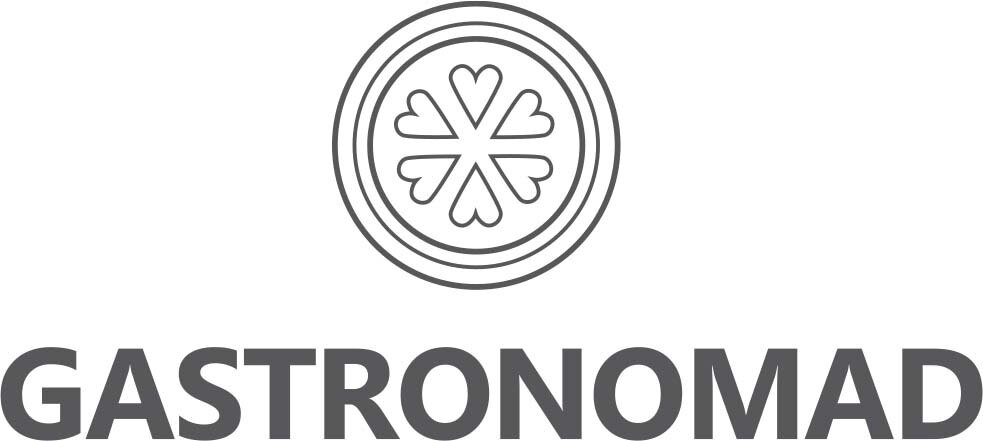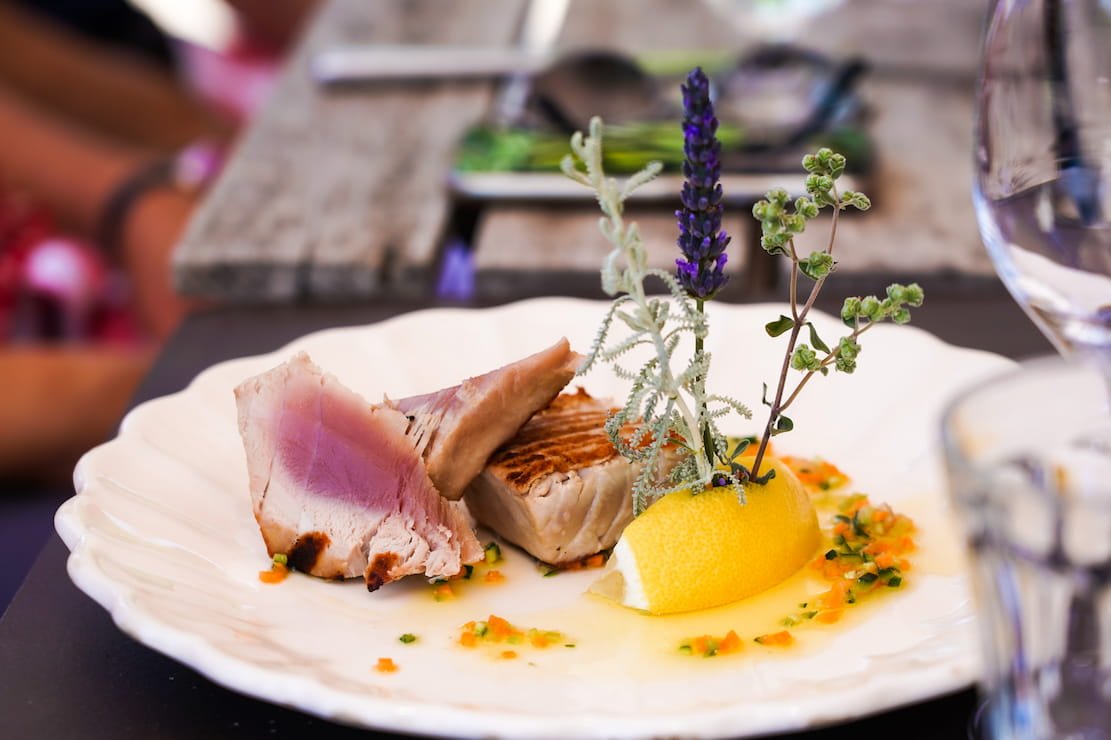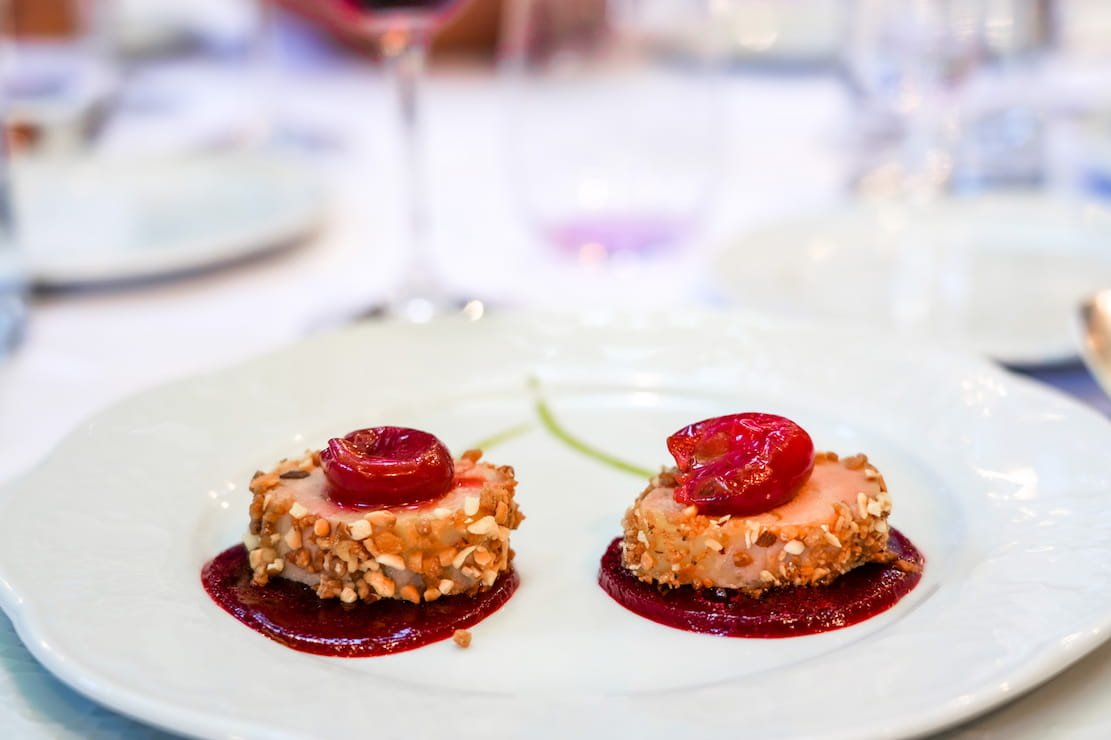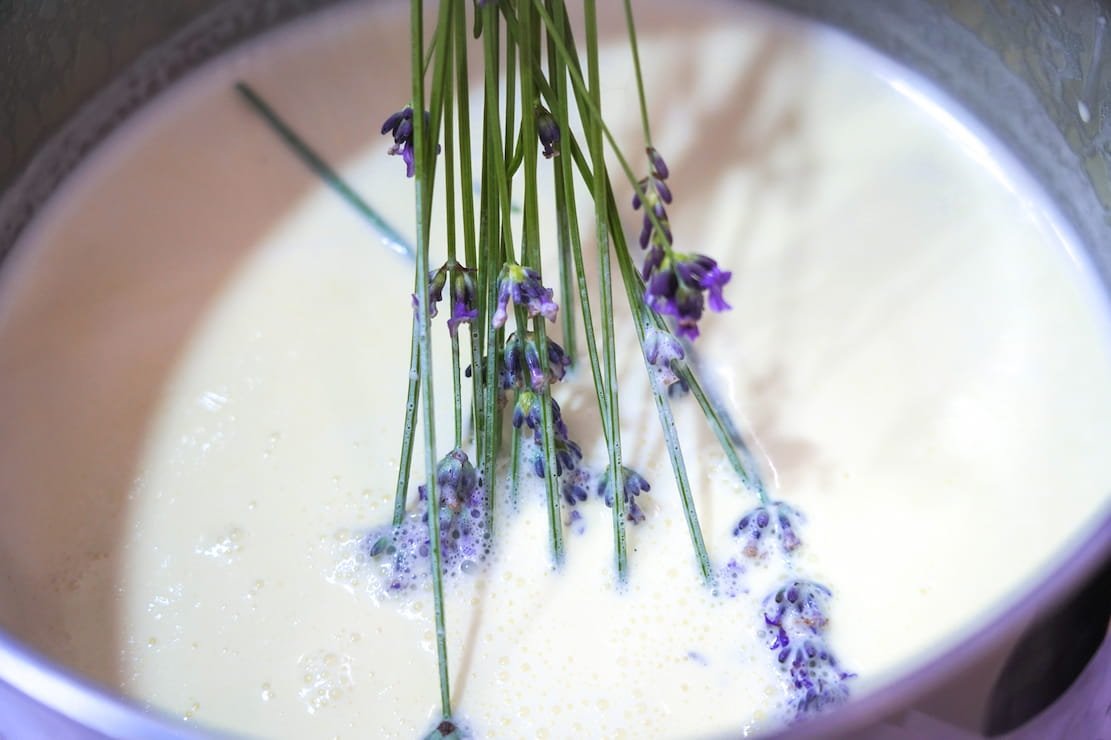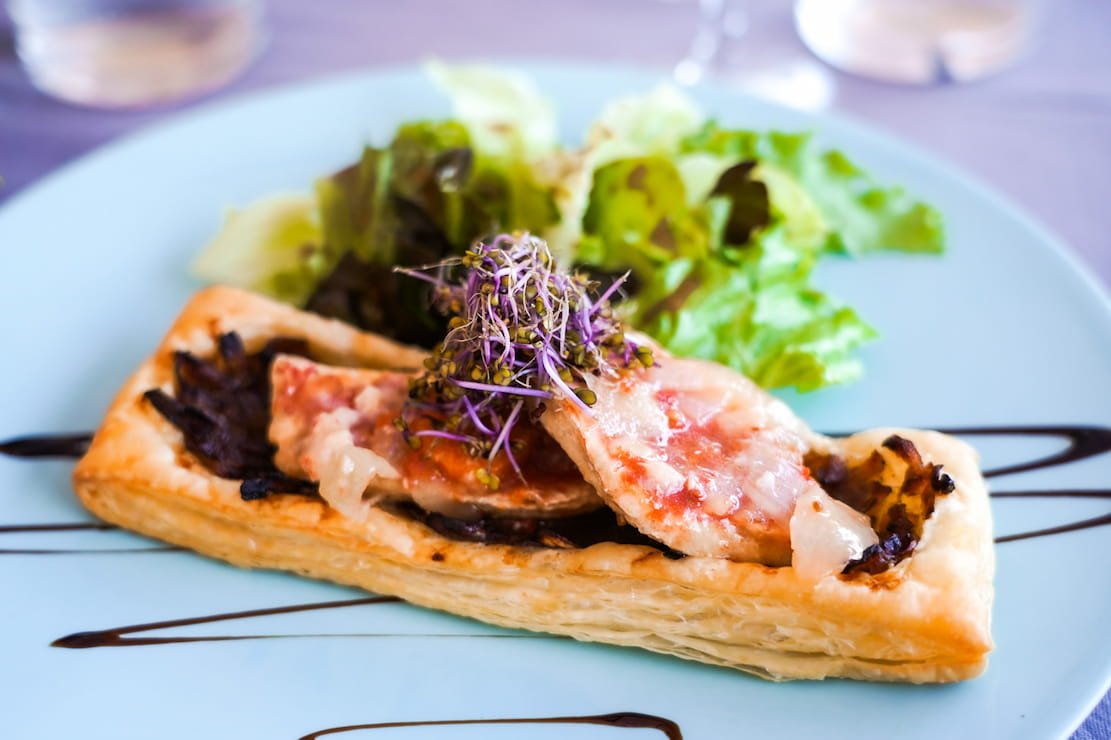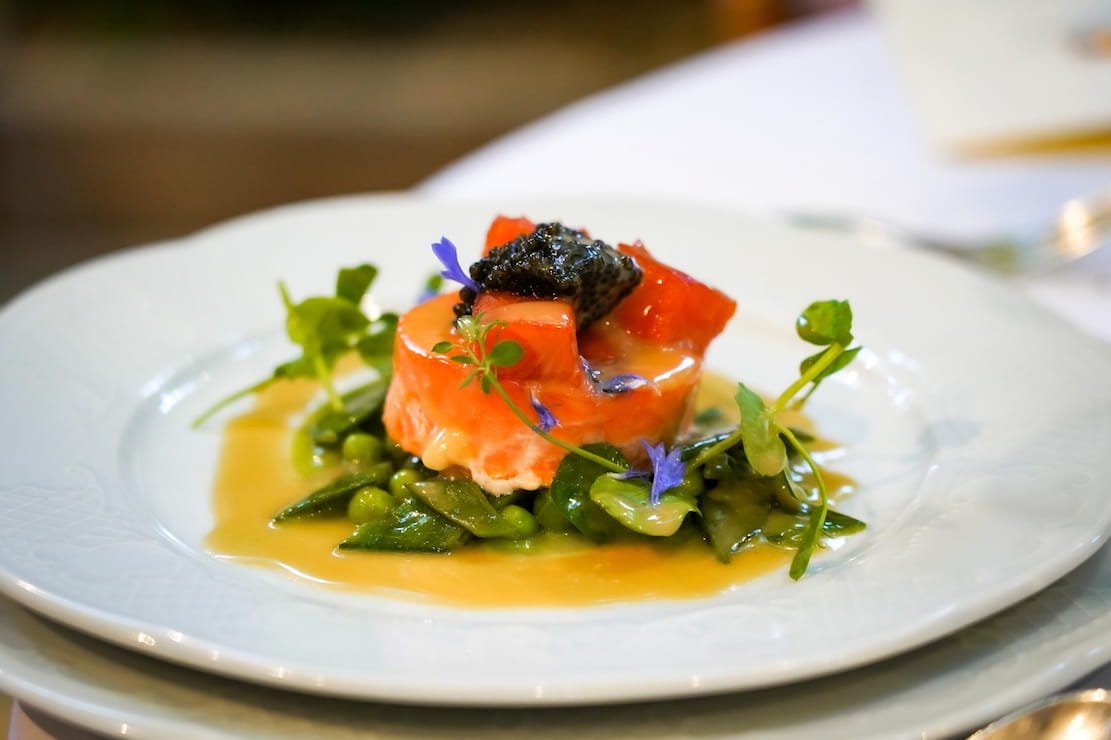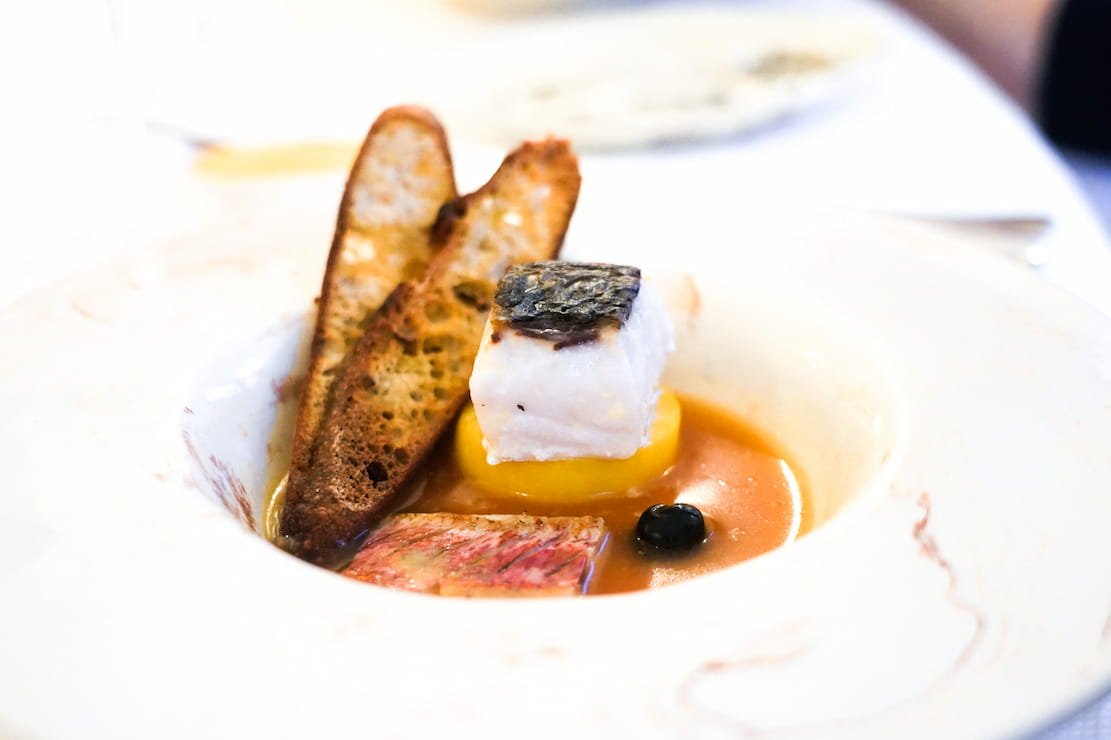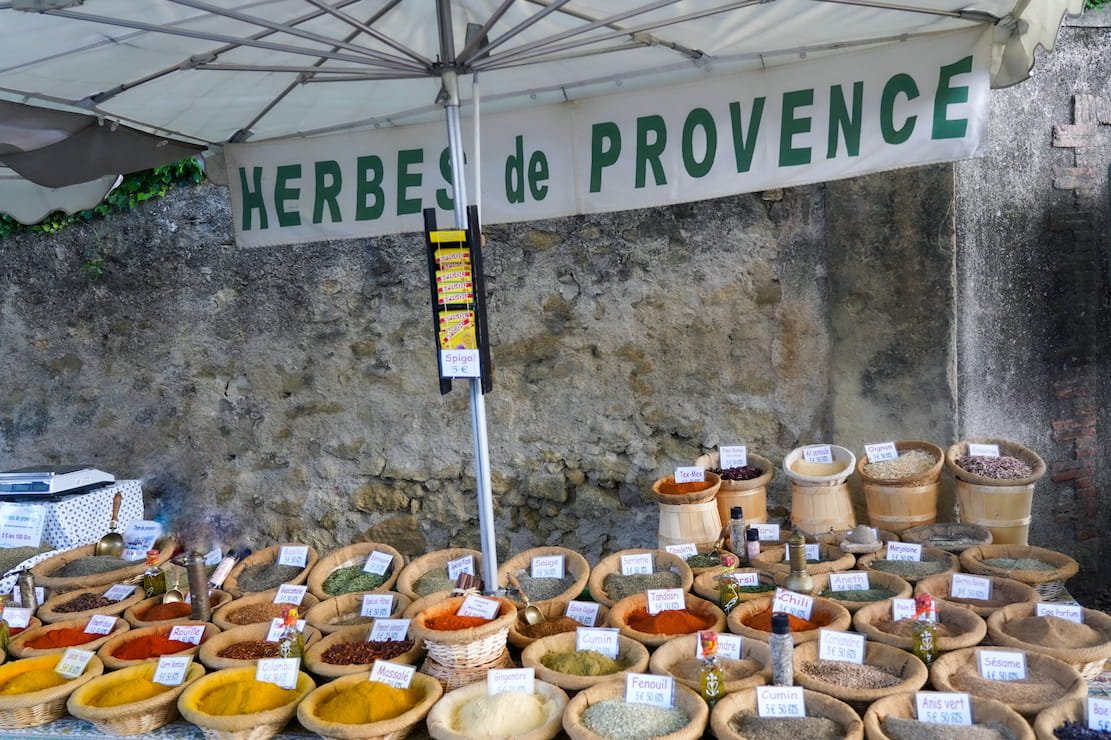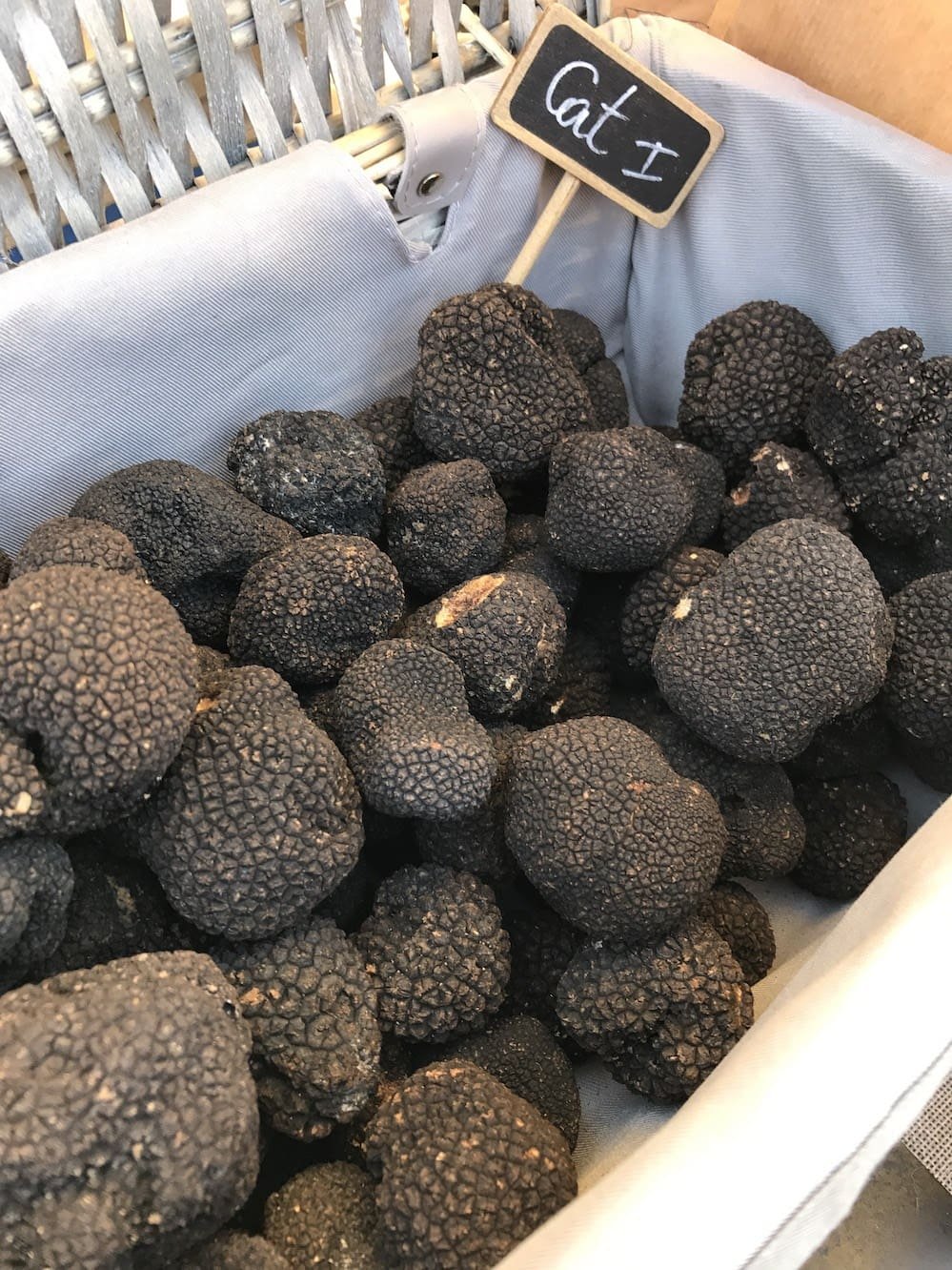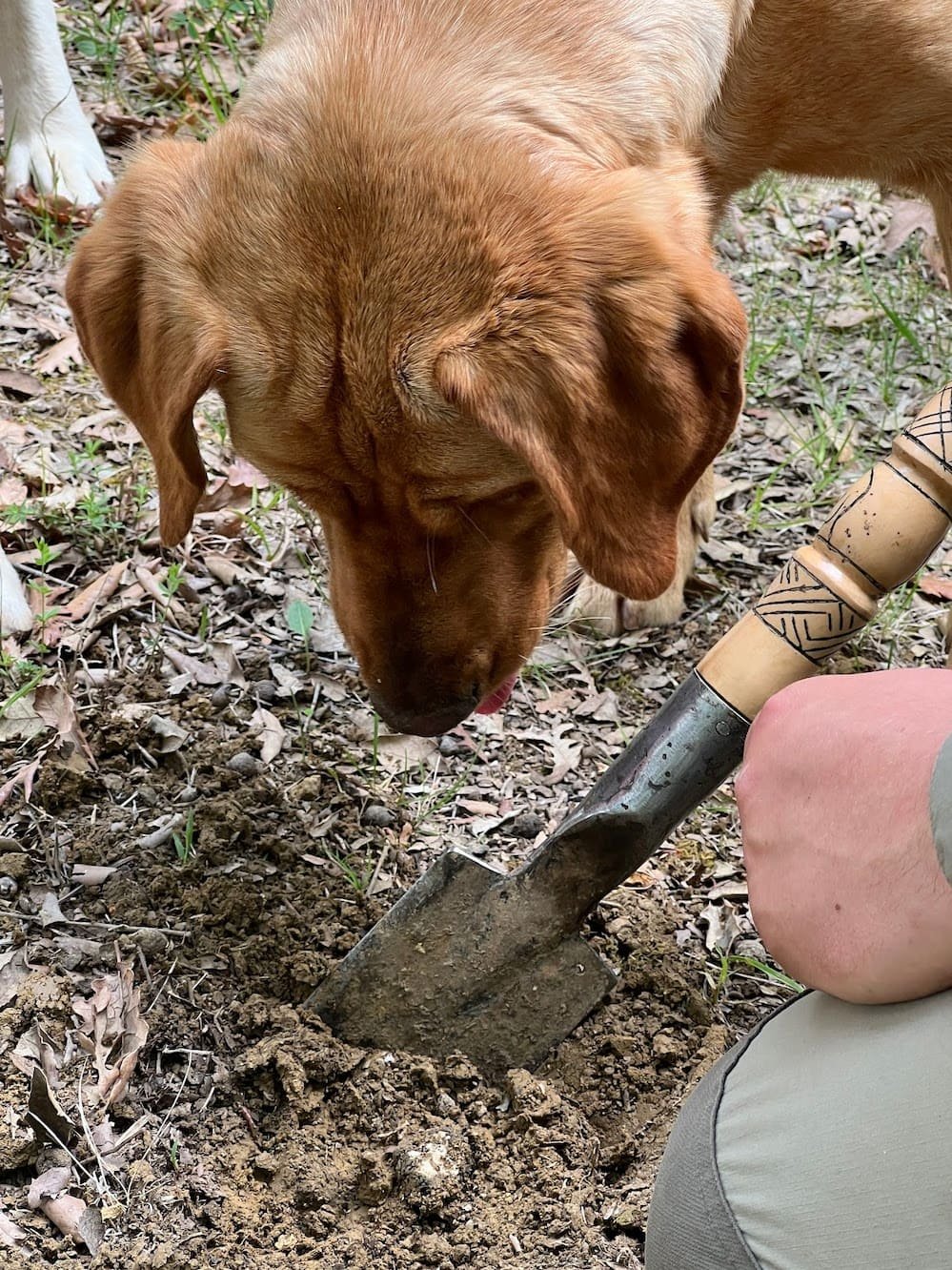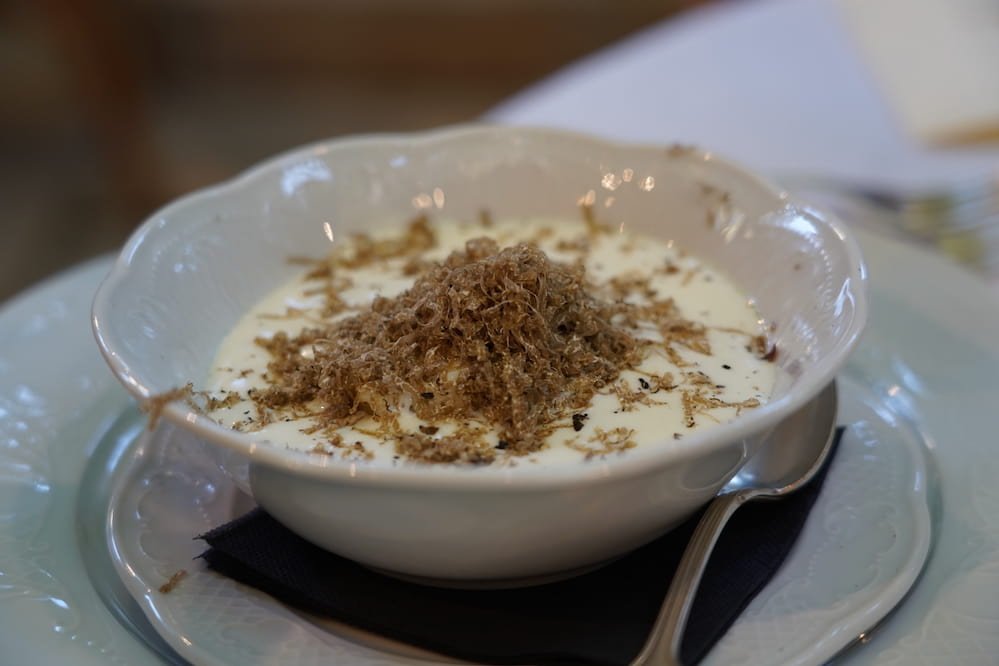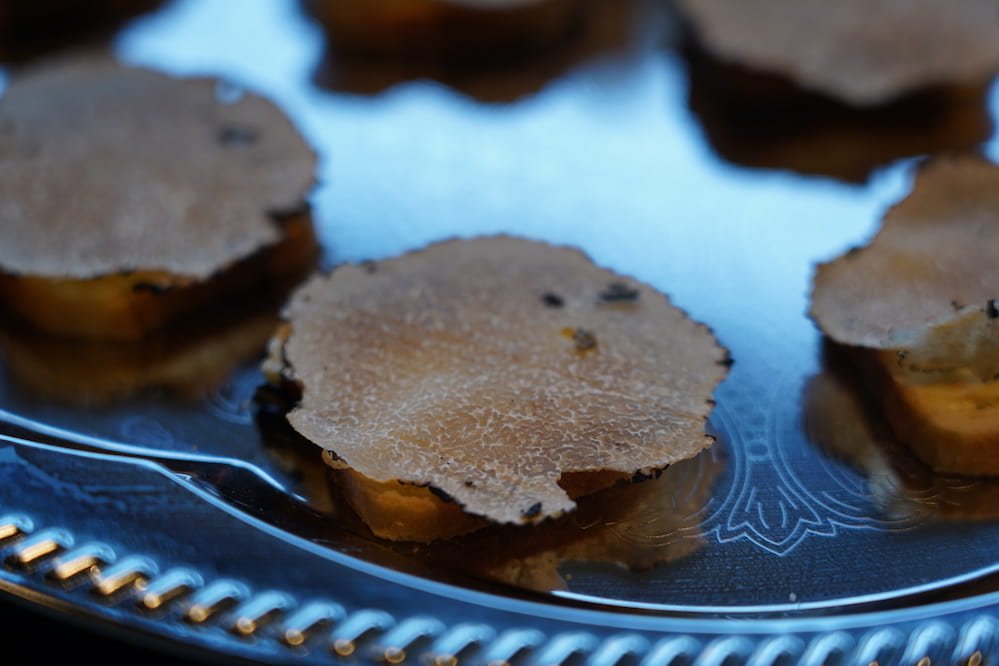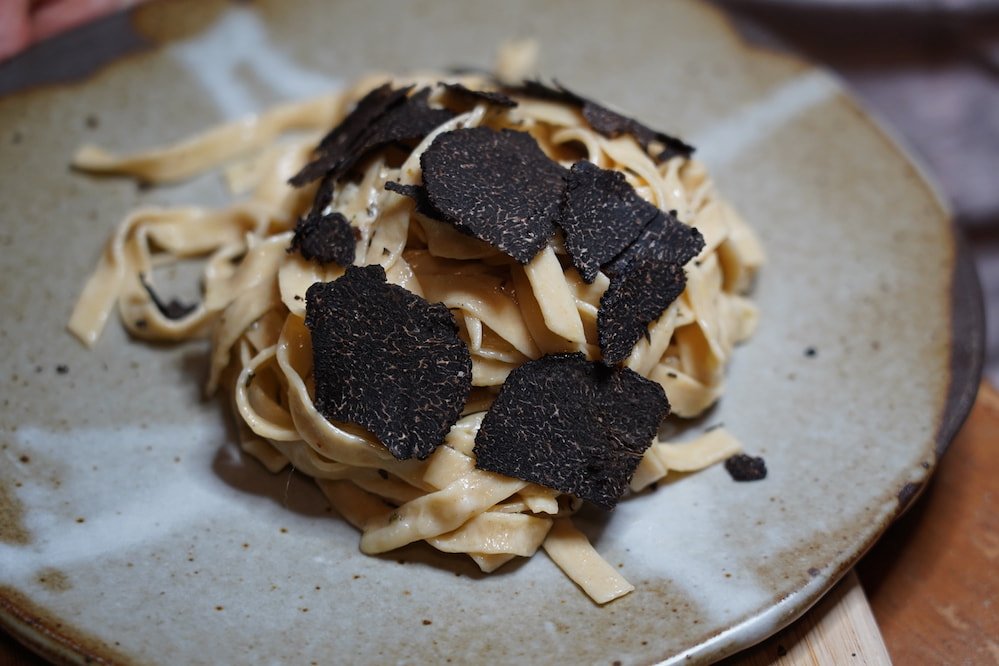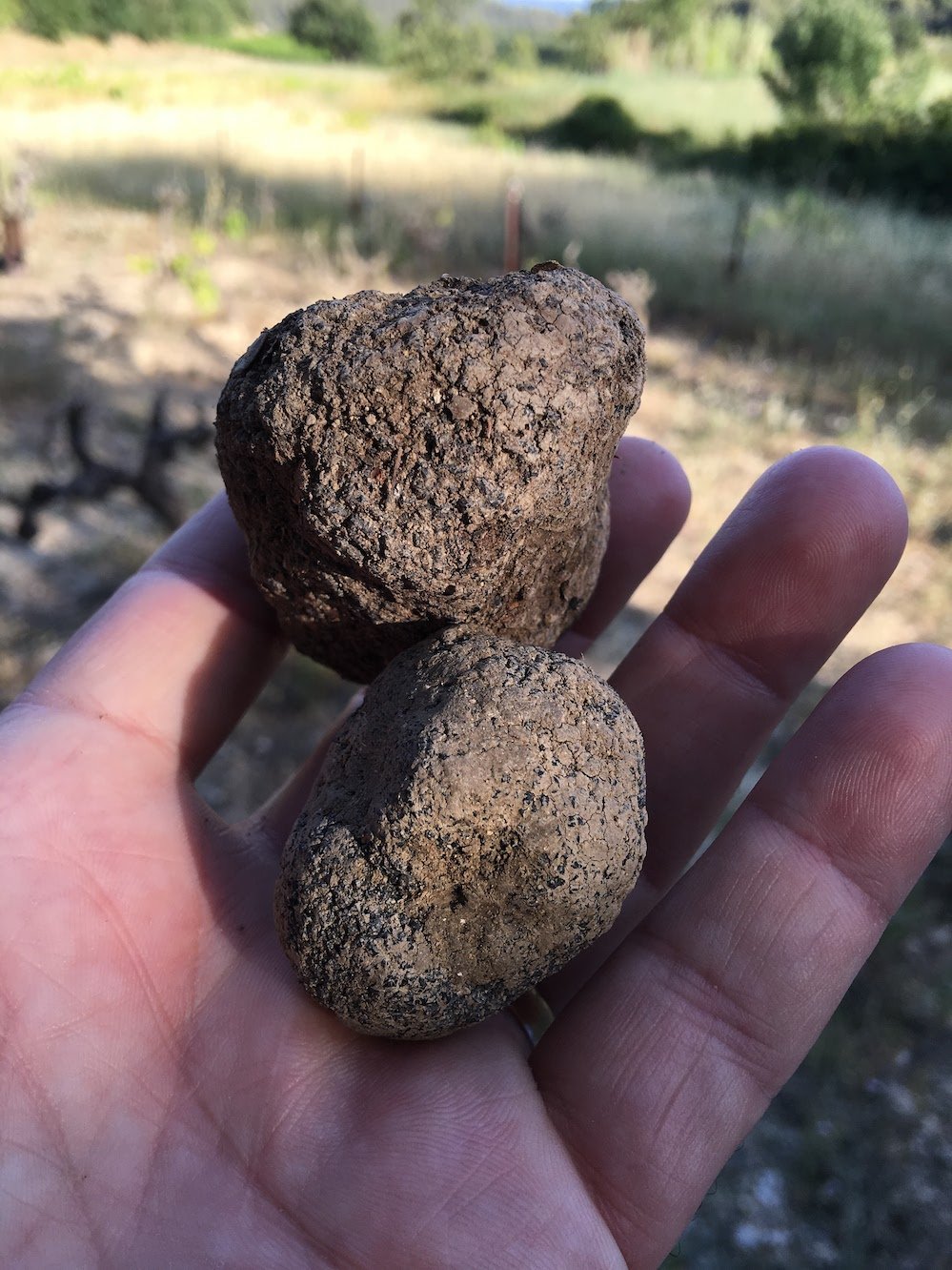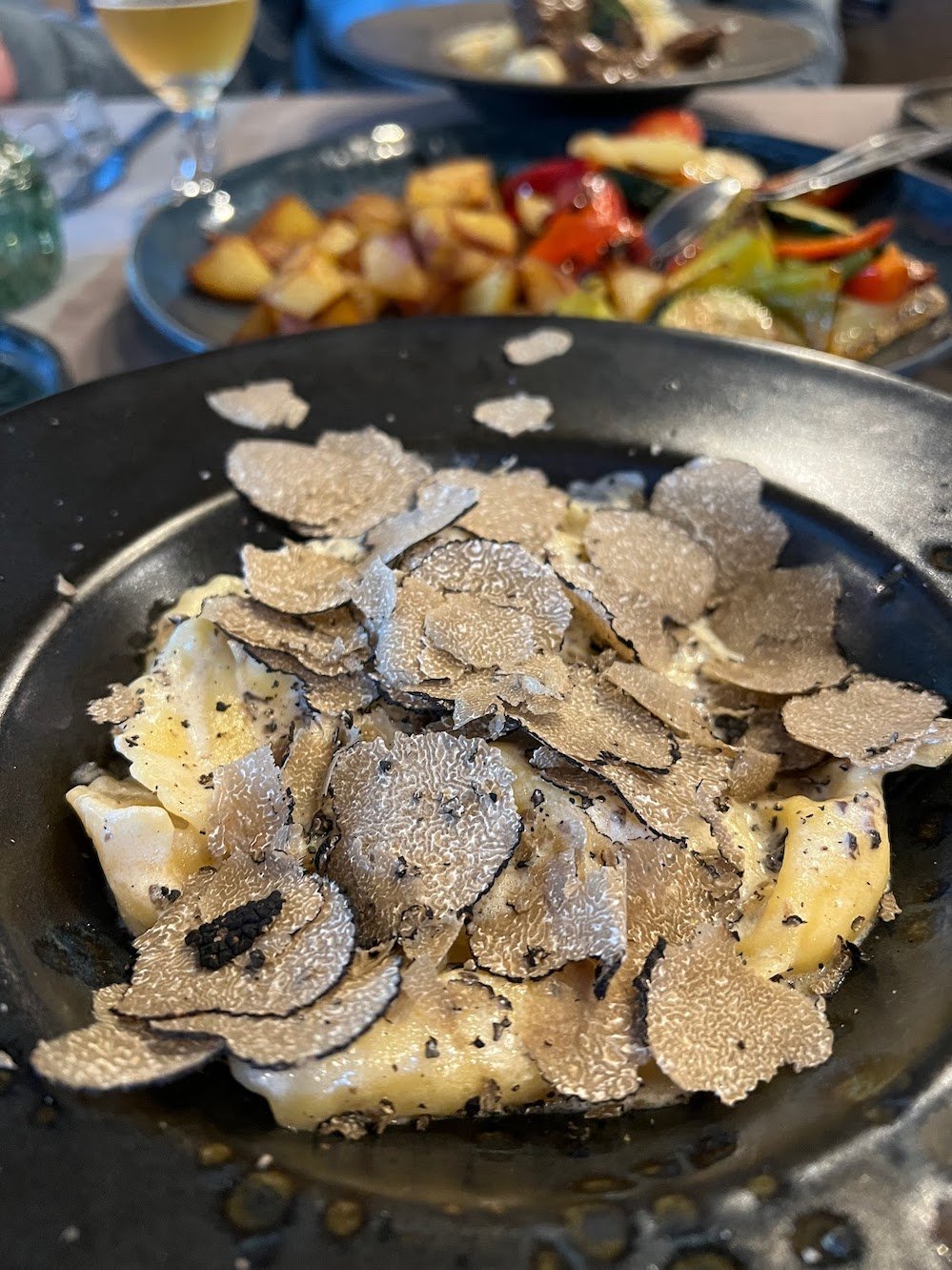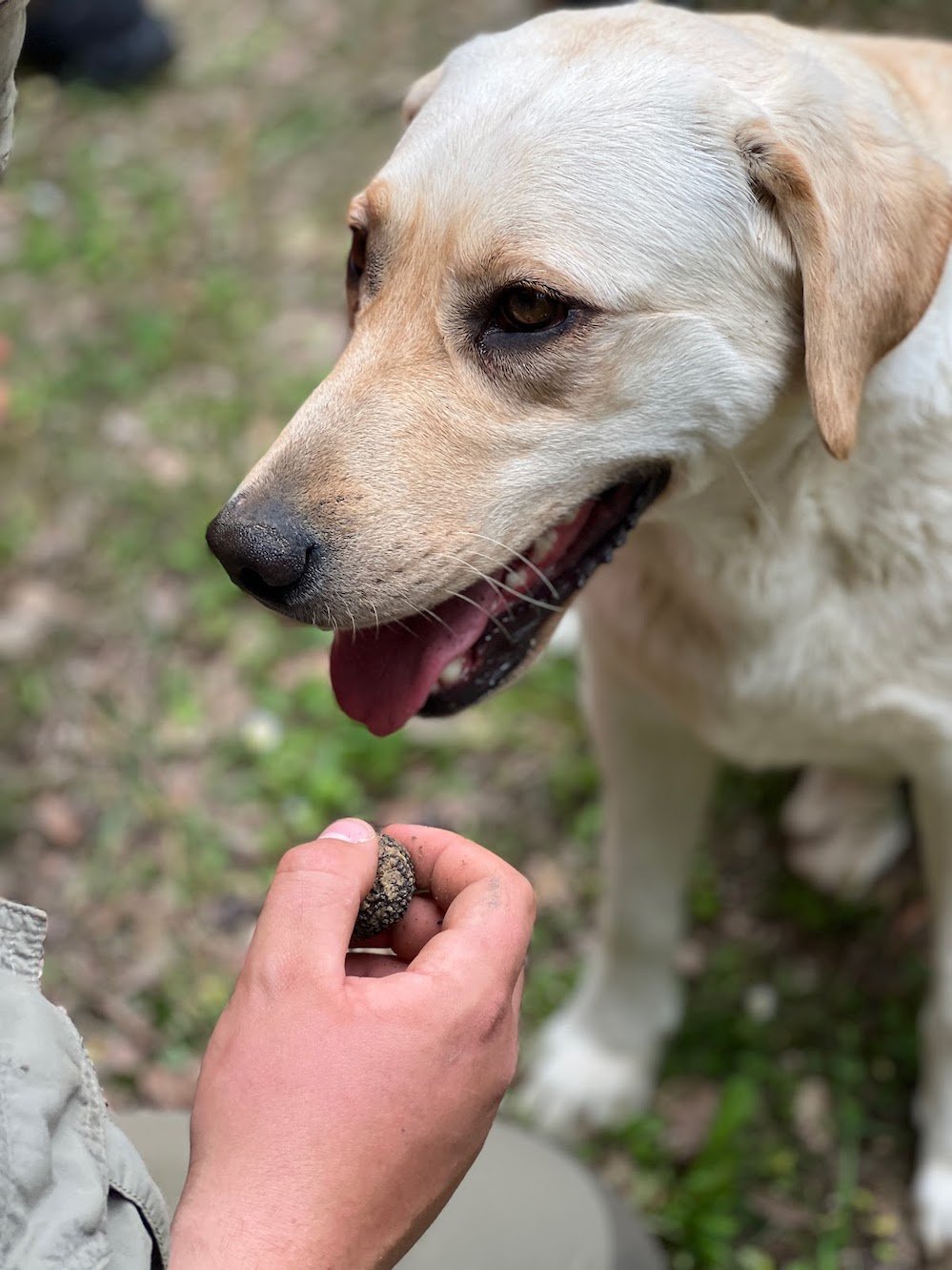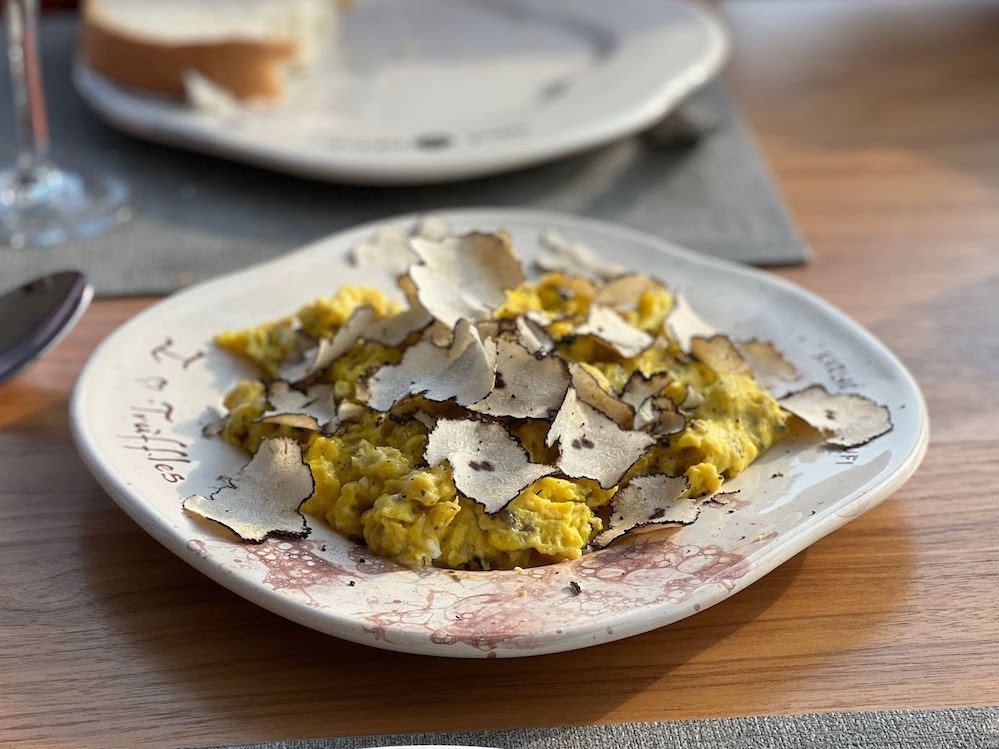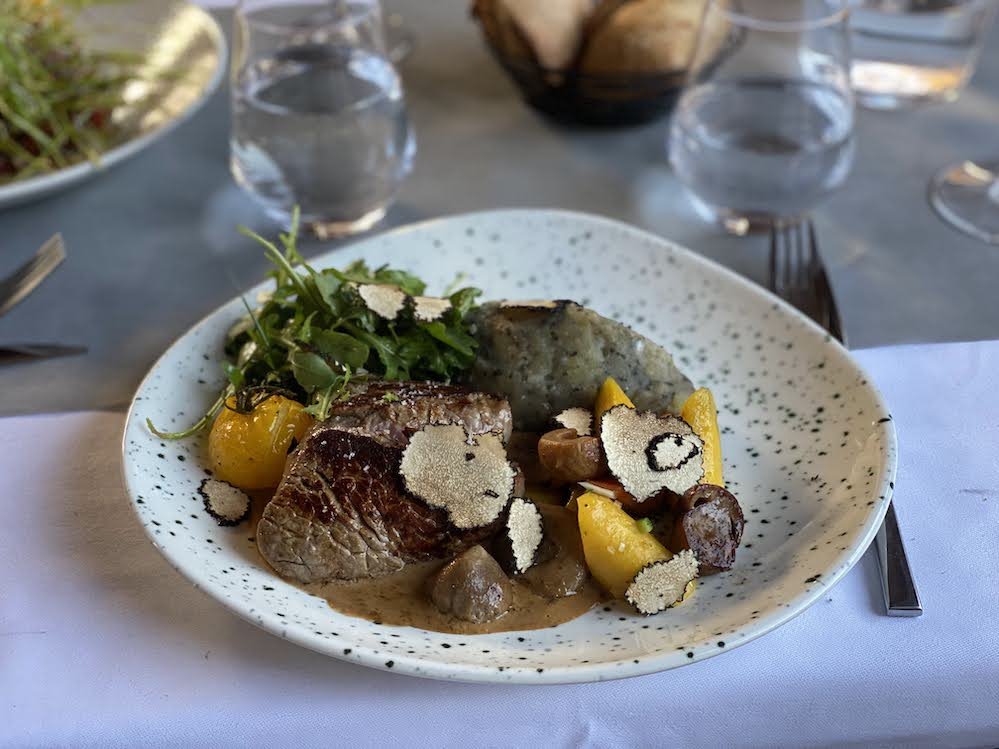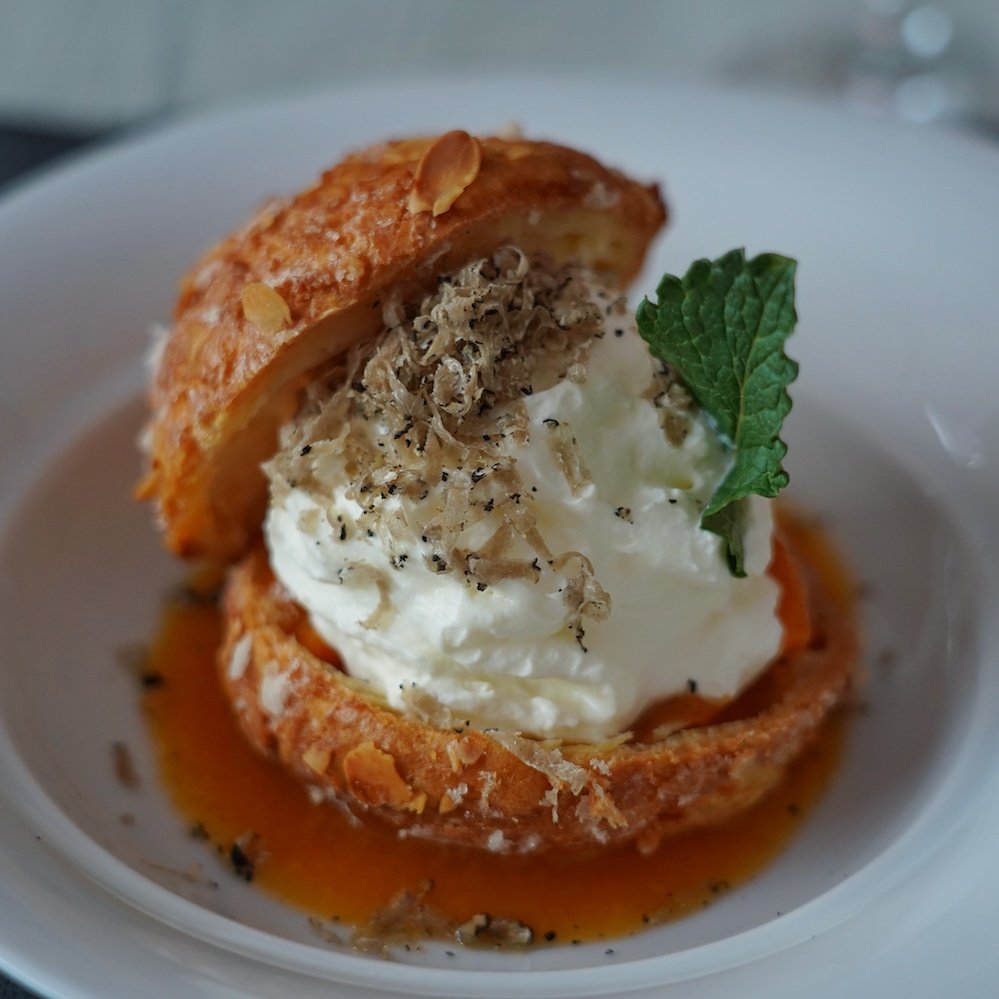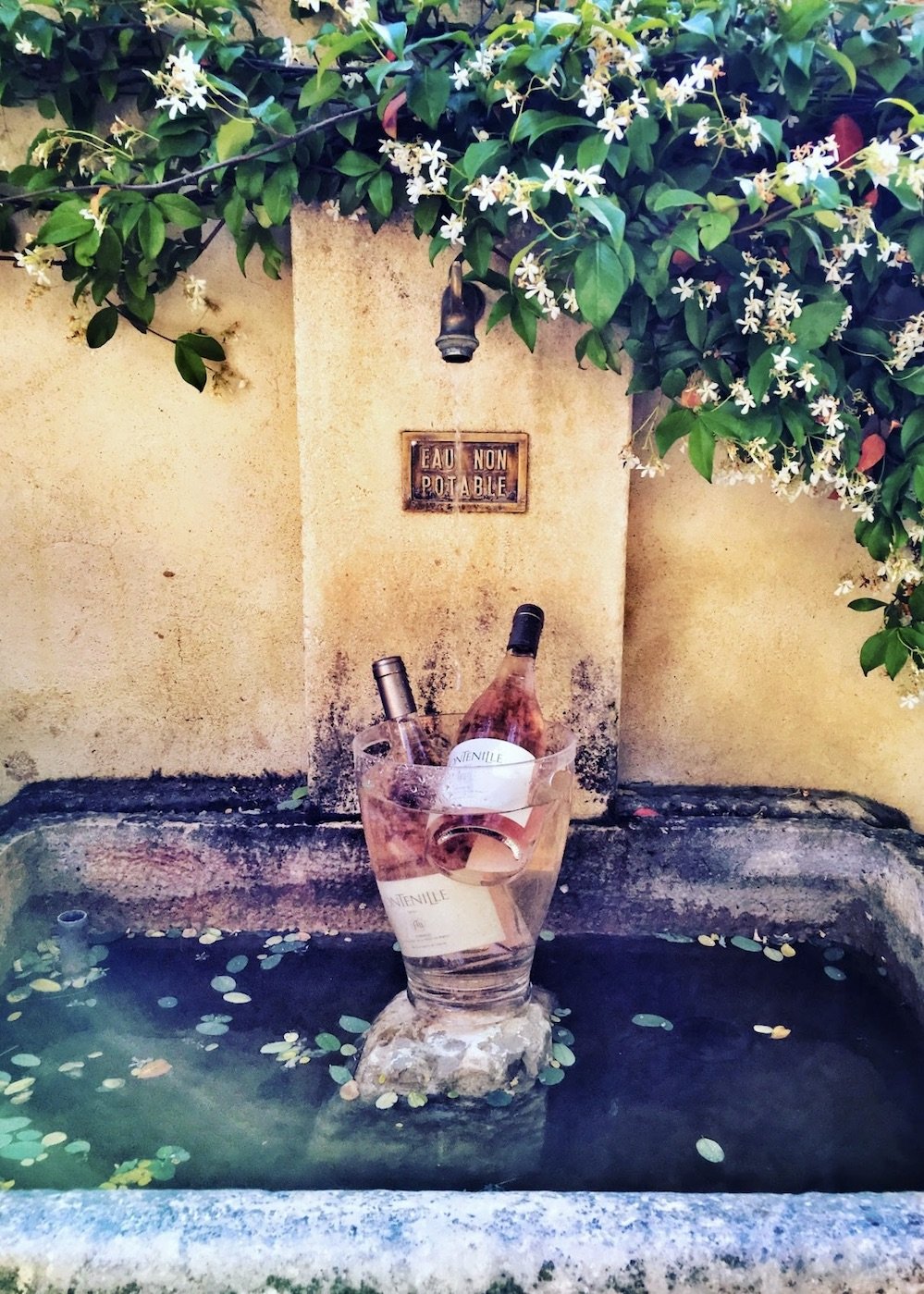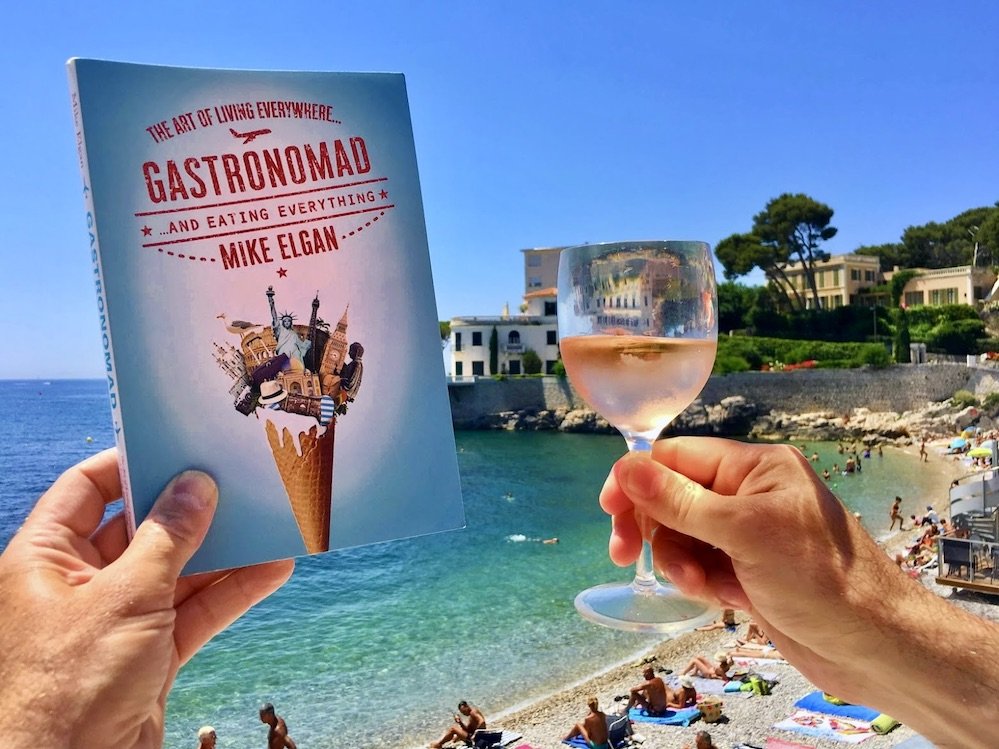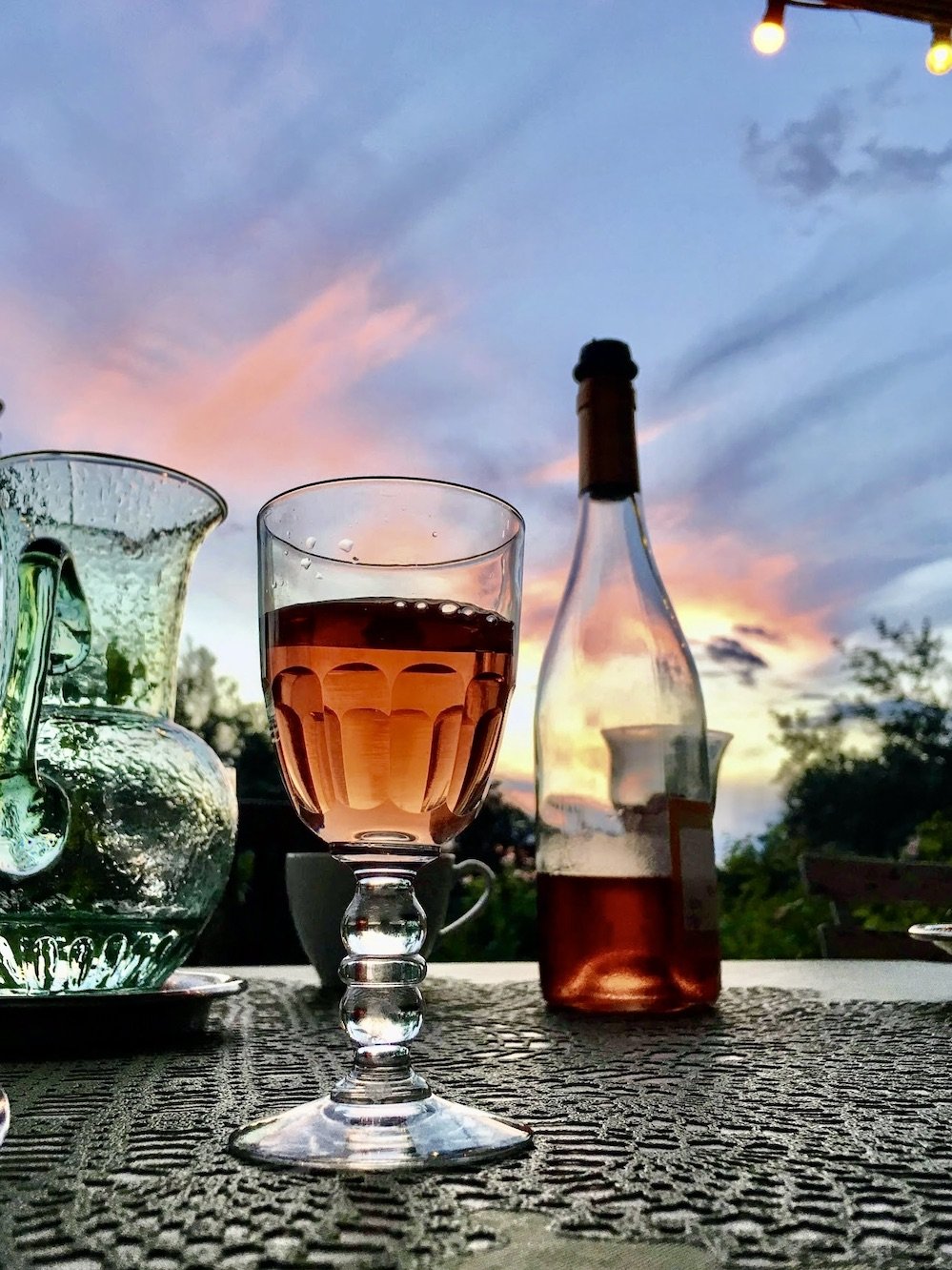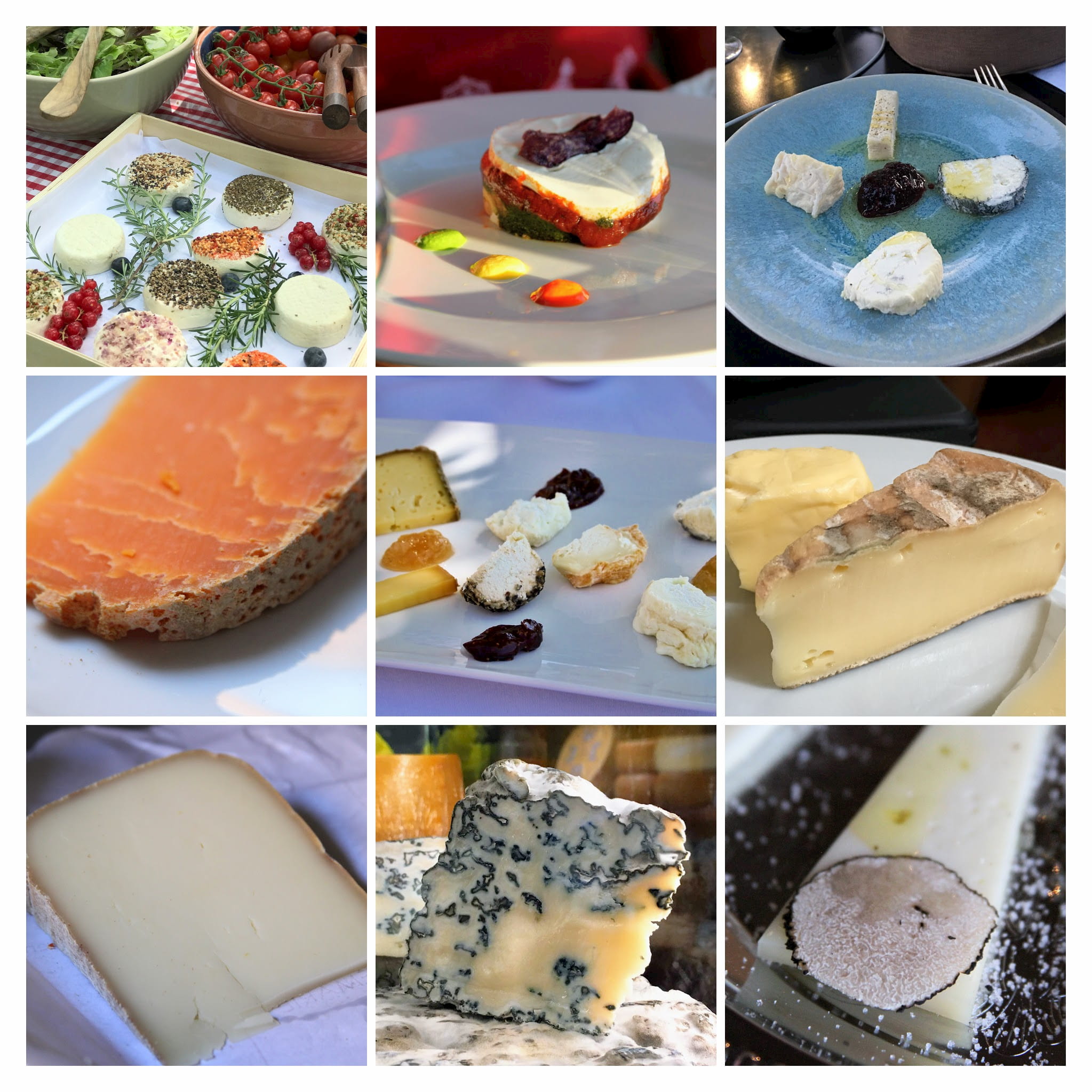Provence is, above all, farm land — an agricultural countryside, but a special one. What makes Provence special are three kinds of farms: grape, lavender and truffle.
You can see the vineyards and lavender fields everywhere. But the truffle farms remain hidden away.
And while the grapes are processed into wine and the lavender into 100 different products (including lavender oil), we eat the truffles completely unprocessed.
While the hunting of truffles that grow naturally in forests goes back at least 4,000 years and spans many countries, truffle farming is particularly associated with Provence.
Trufficulture, the farming and cultivation of truffles, started in Provence in 1808 when Joseph Talon, of Apt, transplanted the oak tree seedlings growing under trees where truffles had been found. Other French farmers experimented with trufficulture, and later Auguste Rousseau of Carpentras planted 17 acres of truffle-producing oak trees in the 1840s.
By the end of the century, 190,000 acres of truffle-producing trees had been planted and truffles were a common ingredient in French cooking among all social classes. But French truffle production declined in the 20th Century, with war, industrialization, urbanization and other factors, and production today is a tiny fraction of what it was over a hundred years ago.
Roughly 80% of the truffles produced in France are farmed. France has nearly 20,000 truffle farmers, who produce around 30% of the world’s truffles.
How does truffle farming work, exactly?
A truffle is a tuber, which is an underground fungus that evolved to live symbiotically with trees. In order to grow, truffles need very specific conditions: the right soil, climate, tree and spores.
To farm truffles, farmers buy trees (in France, usually oak trees) with roots that have been inoculated with truffle spores. They plant them in locations where they believe truffles can grow.
And then they wait.
It takes between 7 and 10 years after planting for trees to start producing truffles, if they do produce them at all. Many inoculated trees never produce truffles.
Truffles need mild, dry winters and warm summers with lots of sunshine. Provence is ideal.
And most truffle farms are hidden away on purpose and truffle farmers cultivate direct relationships with sellers, chefs and consumers. The world of truffles is rife with theft, trafficking, fakery, and fraud. Flavorless cheap Chinese truffles are smuggled into Europe and sold as the good kind. Truffle thieves show up to truffle farms with their own dogs and steal them. In France, the police often set up roadblocks during truffle season to search cars for stolen truffles.
During the Provence truffle seasons of summer and winter, farmers use dogs trained since puppyhood to find truffles. (They used to use pigs, but large, hard-to-control pigs were far too interested in eating the truffles. Dogs don’t care about truffles — only the reward for finding them, which is usually a small piece of ham.
Truffle dogs and their handlers (often the farmer, but sometimes a hired specialist) visit the spots daily where truffles might grow — you can tell because the truffles defensively kill grass and weeds around the trees so they can hog the nutrients. The dogs use their amazing sense of smell to search for truffles. When they identify a spot, they start digging. The handler stops them, and does the digging themselves gently with a special trowel. When a truffle is pulled out of the ground, they let the dog smell it directly, then immediately give the dog a treat.
Farmers rinse and scrub the dirt off, let them dry then have them delivered immediately.
During our Provence Rosé Experience, we spend some quality time with our truffle farmer friend and his dogs, and go truffle hunting, then spend hours enjoying very fresh truffles at his home with a banquet of other delicious foods, as well as champagne and other wine. It’s a master class in truffles, and the most delicious way to learn about this magnificent ingredient.
How and why to eat truffles
Truffles taste mushroomy, earthy and intoxicating, and the taste lasts in your mouth for a long time.
The vast majority of truffle-related products are not recommended. The highest quality truffle oil, truffle salt and other truffle-infused products can sometimes be nice (the bad stuff uses fake truffle aroma), but don’t even remotely compare to freshly sliced or grated raw truffles.
Even whole raw truffles aren’t great if they’re not fresh. They last little over a week. But unscrupulous vendors try to sell older truffles in the market, hoping to find inexperienced buyers.
You can tell the freshness of truffles by gently squeezing them. if they’re too soft, they’re no longer worth eating. Fresh truffles should be firm, but not dry and hard when you squeeze them.
Out of the more than hundred varieties of truffles, only 12 varieties are good to eat. In Provence, the most prized variety is the black Perigord truffle. (White truffles, which cannot be farmed, are mainly from Italy, but also Croatia.)
Truffles are very low calorie, and are rich in potassium and vitamins A, D and K.
Truffles give off a wide range of scent molecules, and also pheromones. One of these is called androstenone, which is the pheromone in the saliva of male pigs that attracts female wild and domestic pigs to truffles.
One of the scent molecules is called anandamide, which has been described as the “bliss molecule.” The chemical is similar to the psychoactive compound in marijuana, called tetrahydrocannabinol. Smelling the anandamide in truffles causes your brain to release happiness-inducing chemicals.
It’s likely that truffles evolved to release this chemical to attract mammals to them. Making us happy (and wild pigs and other mammals) is part of their reproductive strategy.
Truffles are unlike any other food ingredient. They should be consumed immediately after being thinly sliced. And as a flavor, they should never take a back seat to other flavors. They require fat and salt without other strong ingredients. For example, on a slice of cheese, or a slice of bread with a farmers cheese. Olive oil or butter are usually involved. But truffles lend themselves to creativity.
One of our favorite pizzas available in some good restaurants in Provence has extremely thin crust, very mild cheese, no sauce and is covered in freshly shaved truffles (the picture above shows one of these pizzas we enjoyed recently).
Anything you put in a jar with truffles will acquire a wonderful truffle flavor. (The truffles themselves should never be submerged in any oil or liquid.) The easiest and best way to store truffles is in a jar in the fridge with eggs. The smell and taste of truffles will go right through the shells and infuse the eggs with truffliciousness. Pro tip: Scramble the eggs, sprinkle a mild cheese all over them, then cover them with freshly sliced or grated truffles for the ultimate in truffle eggs.
Truffles are one of nature’s greatest culinary gifts. And the truffle farmers of Provence — and their cute truffle dogs — are the heroes who make sure we can all enjoy them.
